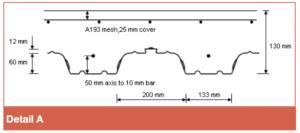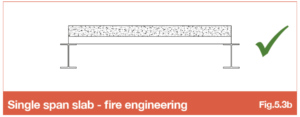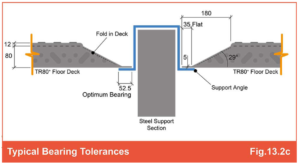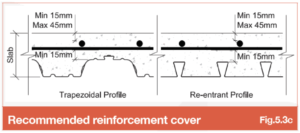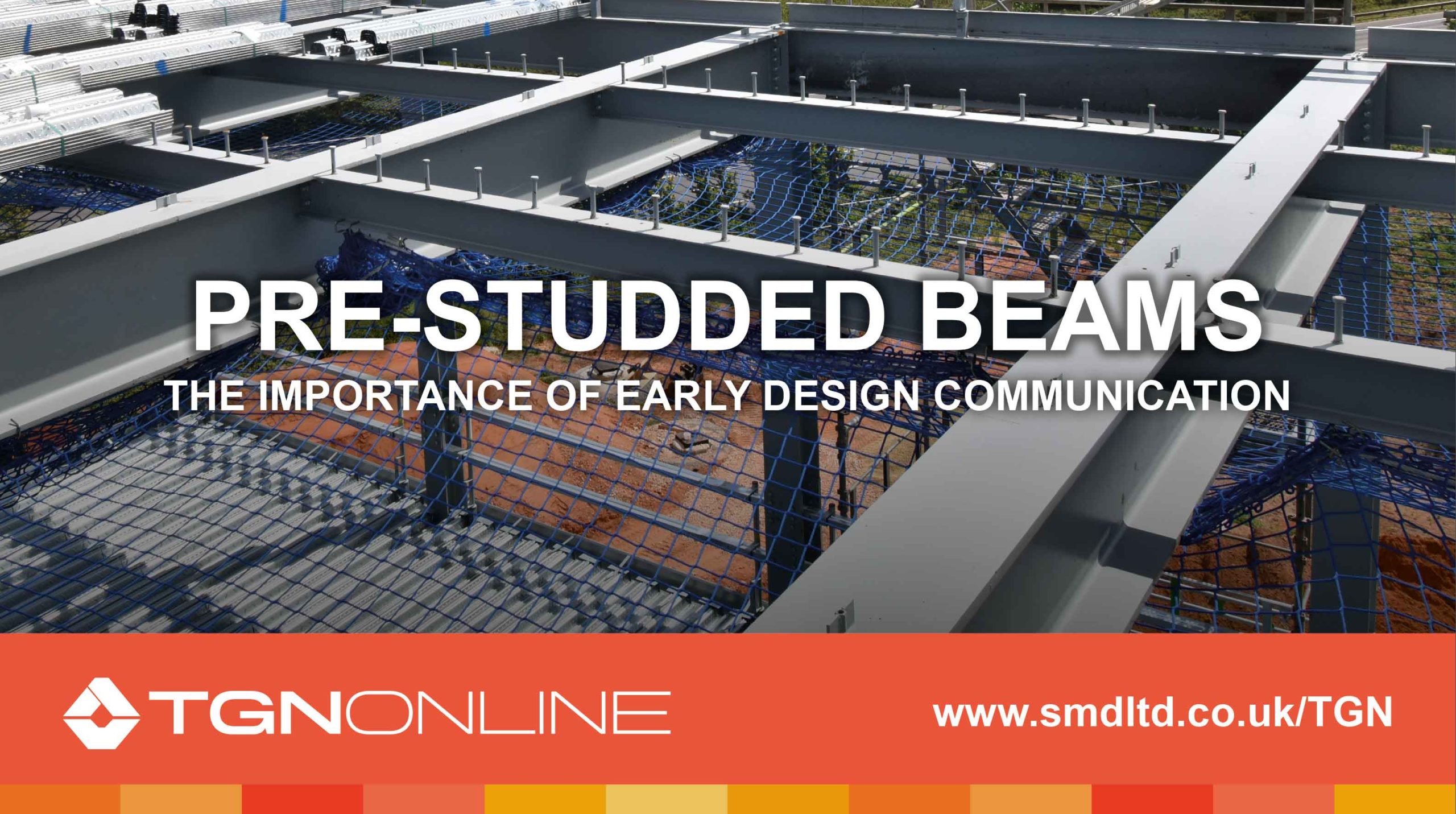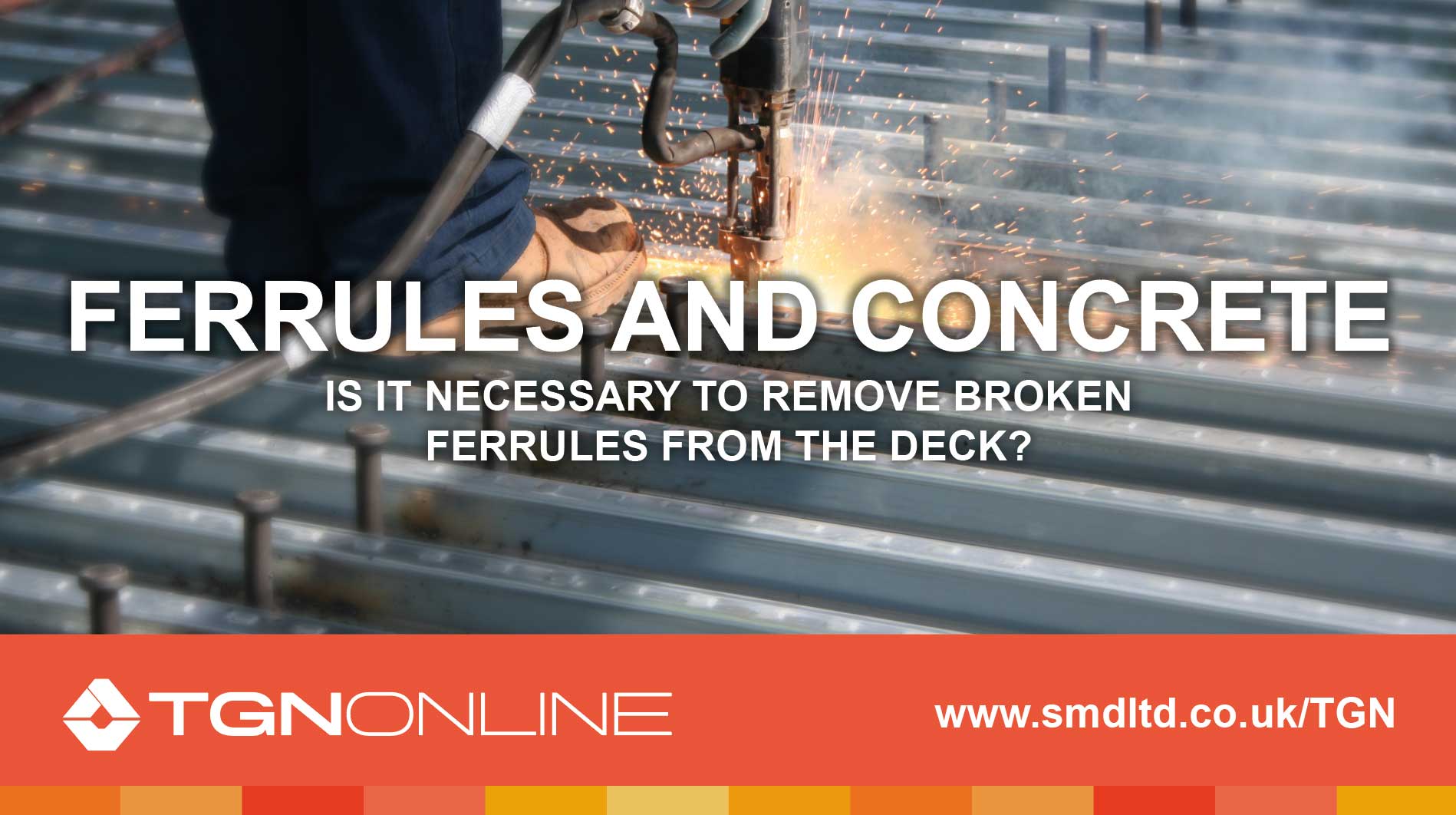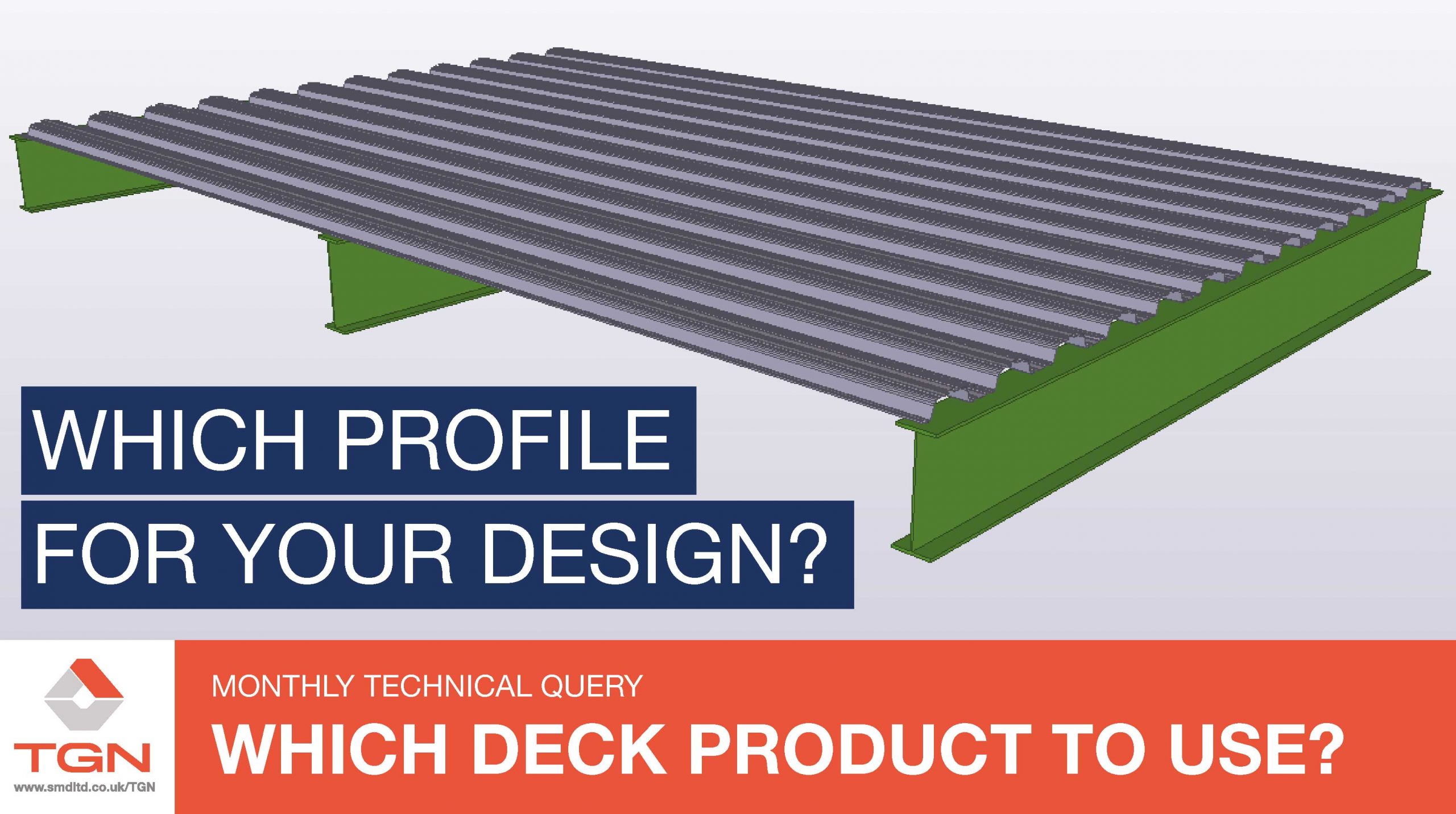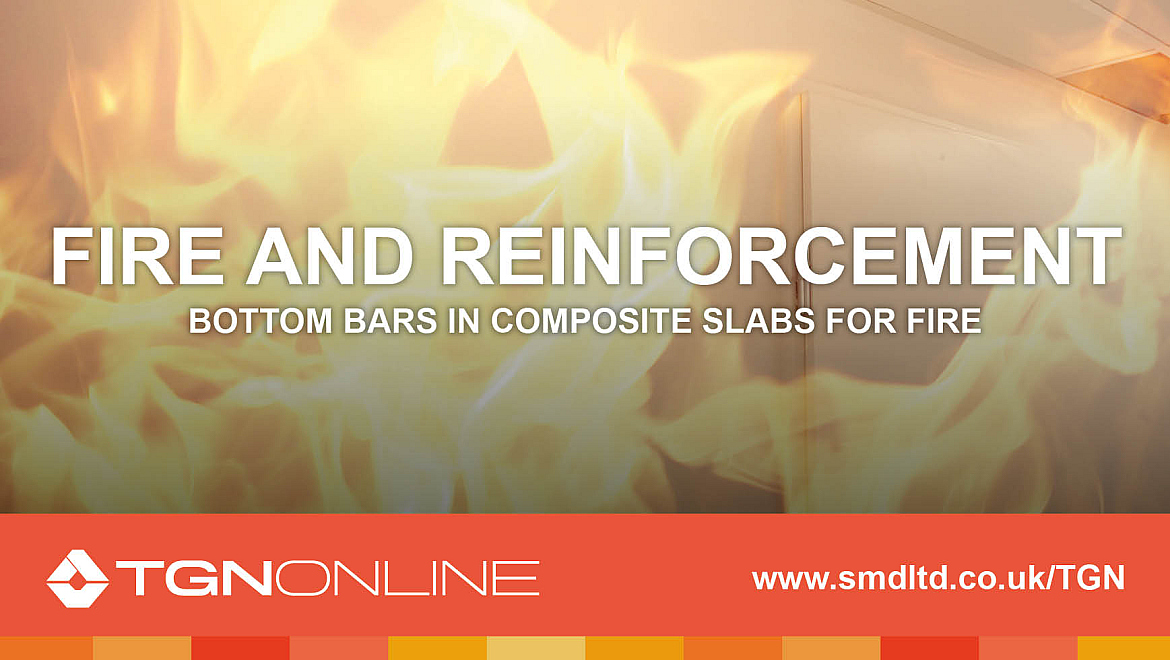
In most situations composite slabs are designed for fire using only a light mesh reinforcement in the top of the slab. This is justified using the SCI published Non-Contradictory Complementary Information (NCCI) document PN005c-
GB which covers the design of composite slabs using mesh and the deck at elevated temperatures and, something that is often overlooked, relies on continuity (hogging resistance) of the slab over at least one internal support
Slab without continuity is just one example where additional bottom reinforcing bars in the deck troughs is typically required, but there are others as discussed below:
The most common need for bottom fire reinforcing bars (as shown in Detail A) is where slabs are simply-supported with no continuity at either end (shown in Fig.5.3b from TGN online). In these situations the deck does not provide adequate sagging resistance for the slab during fire and hence additional bars (that are cooler in fire as they are insulated by the surrounding concrete) are required to provide adequate bending resistance for the slab at the given fire temperature.
This detail and requirement is common in light steel frame (LSF) construction as the slab in each room is an isolated panel (with no slab continuity) bearing on the header of the support LSF load- bearing wall (as shown in Fig. 13.2c from TGN Online).
It is not only simply-supported slabs that need additional bottom fire reinforcement. Other situations where bottom fire reinforcement should be considered are:
- Continuous slabs with long spans and high loadings where it is not possible to get a mesh only design (even with 2 layers) to work. In this scenario, adding bottom bars may be more economical and practical than increasing the slab depth.
- Shallow continuous slabs where there is inadequate room to fit the required mesh reinforcement in and achieve minimum cover requirements noted in Concrete Society TR75 (see Fig. 5.3c from TGN Online). This is typically only a concern where 2 layers of mesh would be required. When checking this, it is important to consider the additional thickness of mesh at laps in the reinforcement. The consideration of flying ends to the reinforcement may enable mesh to fit into the slab and avoid the need for bottom fire bar reinforcement.
- Where fire periods exceed 2 hours, as the Mesh Only method is based on fire tests and no fire tests have been carried out for greater than 2 hours due to the rarity of this design requirement.
- When considering fire reinforcement, it is important to realise that in some situations it is the normal stage (also known as composite stage) design that governs the reinforcement required in the slab, particularly where there are high concentrated loads on the slab.
Further Technical Guidance from SMD
See section 5.3 ‘Fire’ on SMD’s TGN Online (Technical Guidance Notes) and the SMD Technical Team will happily assist with further recommendations and designs to suit your bespoke circumstances.
TGN Online
Register your details to gain access to our Technical Guidance Notes (TGN) Wiki pages. Alternatively, complete the form below and we’ll send you a hard copy of our TGN Manual.

